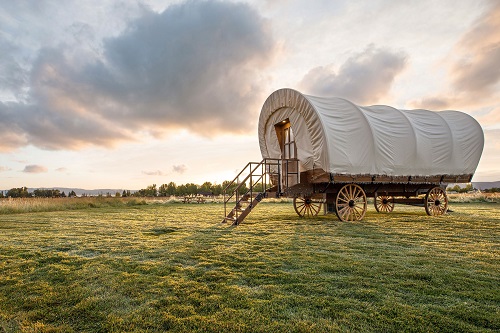

Travel is back. Hotel room night usage is up. And even hotel construction and renovation are trends that are ticking upward. So, what can we look forward to seeing as new hotels reopen? A number of new concepts, according to market research that involves travelers – as well as architects and hotel owners (who ought to know). Read on to learn more.
New Hotels Are Going In – Here’s What They Have
Travel is back. Hotel room night usage is up. And even hotel construction and renovation are trends that are ticking upward. So, what can we look forward to seeing as new hotels reopen? A number of new concepts, according to market research that involves travelers – as well as architects and hotel owners. Event owners, who will be booking properties, need to know what will be in demand.
According to Hotel Management, a number of top design trends are emerging:
Converted Spaces: Kevin Mooney, owner and head of development at The Mohicans Treehouse Resort in Glenmont, Ohio, sees a trend of “unique and unusual spaces” being converted into lodging, such as schools, department stores and parking garages or even school buses, trains and shipping containers.
One company capitalizing on this trend is Zion Ponderosa, who pioneered (heh) the concept of staying in a covered wagon. The western take on the glamping concept, which has been gaining popularity over the last few years, involves staying in a two-bed covered wagon (with amenities) and waking up to a ranch-cooked breakfast.
Other converted spaces include stays in caves, treehouses (like the Mohicans) and even retrofitted planes, according to National Geographic.
Tiny Houses: Tiny houses first debuted as residential alternatives, appealing to those who wanted to get off the grid and back to nature. In 2018, they burst onto the sports tourism scene, being offered as lodging options for those who came to the Indy 500.
The Tiny House Hotel provides a new, innovative and boutique style of on-site accommodation for race attendees looking for a unique opportunity.
“We’re always looking to provide unique experiences for our guests, and the Tiny House Hotel is an exciting new offering in May during the Indianapolis 500,” IMS President J. Douglas Boles said. “This hotel may be tiny, but it will be big in luxury, amenities and fun for fans looking for a race weekend they’ll always remember.”
At the 2018 Indy 500, each pint-sized accommodation space was packed with amenities, including a compact kitchen with high-end finishes, a modern bathroom, air conditioning, sleeping quarters and more. Interested fans could select from a mix of several different houses with varying layouts and options.
In all, a total of 15 tiny house spots will be located at IMS for Race Weekend and the package deal included four general admission tickets to the race, onsite parking, a private concierge service and more. The total cost for the weekend to those who purchased was $3,000.
The Indy 500 wasn’t the first time a sports tie-in has been used to sway visitors to the tiny house lifestyle. In 2015, the United States Air Force set up a Tiny House Jamboree in the parking lot of Falcon Stadium in Colorado Springs, with multiple 200-square-foot houses and vendors dedicated to sustainable living. Event organizers estimated that 10,000 people would come through the gates over a three-day period; however, the so-called 'tiny' event received an estimated 40,000 people and the city of Colorado Springs received tiny house enthusiasts from all 50 states and seven countries. In fact, the event was so successful, it became an annual event.
What else are we likely to see? Hotel Management set forth a few new trends which are synopsized below; to read the full article, click here.
Amenities Guests Are Seeking:
Dedicated fitness spaces: Barbara Chancey of Barbara Chancey Design Group is seeing demand for dedicated studios for yoga, cardio and strength. “Flooring, acoustics, mirrors and lighting for each modality are uniquely different, and like religion, it’s rare to see multiple faiths worshipping at the same time in one common space,” she said.
Customized yoga studios: Chancey also is seeing demand for yoga and movement studios with built-in storage systems and sprung bamboo or hardwood floors. Soft lighting on dimmers, air vents positioned to avoid blowing and sound mitigation are also increasingly popular. Mirrors, however, are optional, she added.
Access to the outdoors: Laura Mooney, owner and head of creative/design at The Mohicans Treehouse Resort, sees increased demand for outdoor spaces off the guestrooms or the main floor. “Other appealing offerings include an outdoor lounge area, fire pits, rooftop gathering spaces, open air common areas, dining areas with a grill and picnic table or a balcony with a seating area.”
Automated parking: Drew Johnson, business development associate at Westfalia, sees automated parking spaces gaining ground. “A fully automated parking system opens opportunities for developers to build more efficient structures that are better for our environment.” Guests park in a small space, take a ticket and use a kiosk to finalize storage. “It removes the need for ramps, walkways, stairs [and] elevators.”
Electric vehicle charging stations: Companies like EVPassport and Gulplug are making it easier for hoteliers to add charging stations both in garages and parking lots.
Design Elements:
Multipurpose design: The multiuse trend isn’t going away any time soon, said Scott Cam, founder of Blueprint Homes in Australia. “A single property can fulfill all the needs of its guests like hospitality, entertainment, workspace, sports and other purposes.”
Hybrid modular design: Hybrid system designs use a “checker box” approach where the building is 50 percent constructed in a factory and 50 percent on site, said James Walsh, founder of Studio Anyo.
Construction Trends (as a side note, many of these are earth-friendly):
Plant-based materials: Plant- and pulp-based construction materials are starting to gain ground, Sexton added. “I think embracing hemp in material production will be a fun industry to watch.”
Modular concrete: Precast slabs and different techniques for carbon-negative concrete are emerging trends, Sexton said. “Precast slabs and precast modular systems undeniably take market share, especially in developing countries where manufacturing doesn’t exist and systems can be prefabricated and shipped in.”
Sustainable materials: Sexton also has seen developers seeking out more eco-friendly construction materials, with Forest Stewardship Council lumber “arguably” more sustainable than concrete. “Engineering with straps and composite exterior sheathing has added significant load abilities to its construction,” he added. “Unfortunately, it will take a few large outliers with deep pockets to go out on a limb with new materials to prove their viability for industries to shift to more sustainable options.”
Softening sounds: Stonehill Taylor installed acoustical plaster for the new Graduate Roosevelt Hotel in New York City. The material both softens the soundscape and accommodates the ceiling’s complex shape.
Eco-friendly and sustainable elements: Hotel projects are using recyclable or biodegradable material for construction, said Matt Swann, president at Brawn Construction. In addition, many are adding solar panels, smart lighting and advanced onsite energy- and water-management systems to reduce waste.
Maximized energy efficiency: Solar productivity has hit a plateau over the past few years, said Matthew Sexton, owner of Grassy Flats Resort & Beach Club and The Lagoon on Grassy Key in the Florida Keys, but battery and inverter tech has caught up to make existing systems more functional.
Natural lightning: Installing large windows and inserting skylights can brighten up spaces and reduce overall energy costs, said Mooney.
Zero carbon, zero waste: Walsh suggests designing buildings to minimize waste created during construction. “The design needs to account for plasterboard sizes and timber sizes; each component needs to be coordinated to ensure it does not generate additional waste when it is installed,” he said.
Solar panels: Installing solar panels to generate direct current electricity “will continue to gain steam,” Mooney said.

